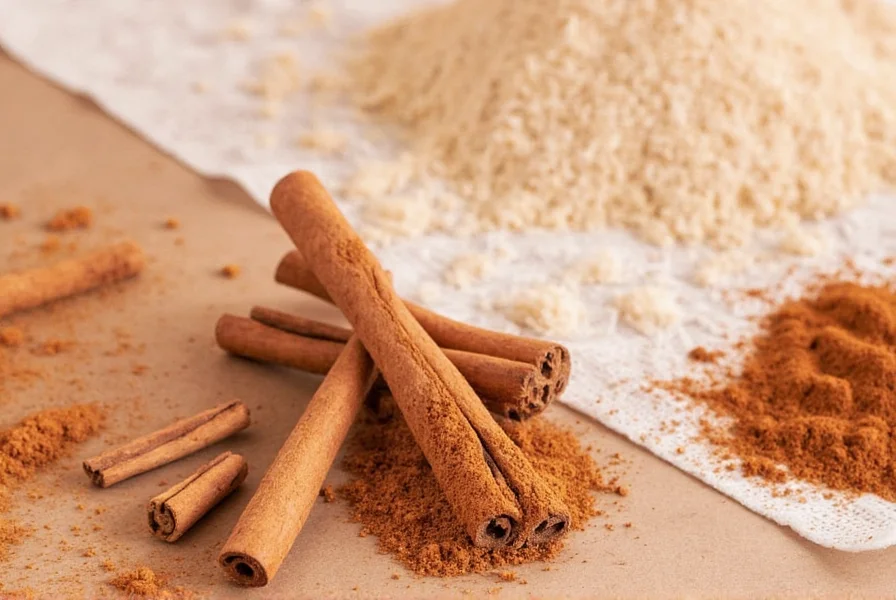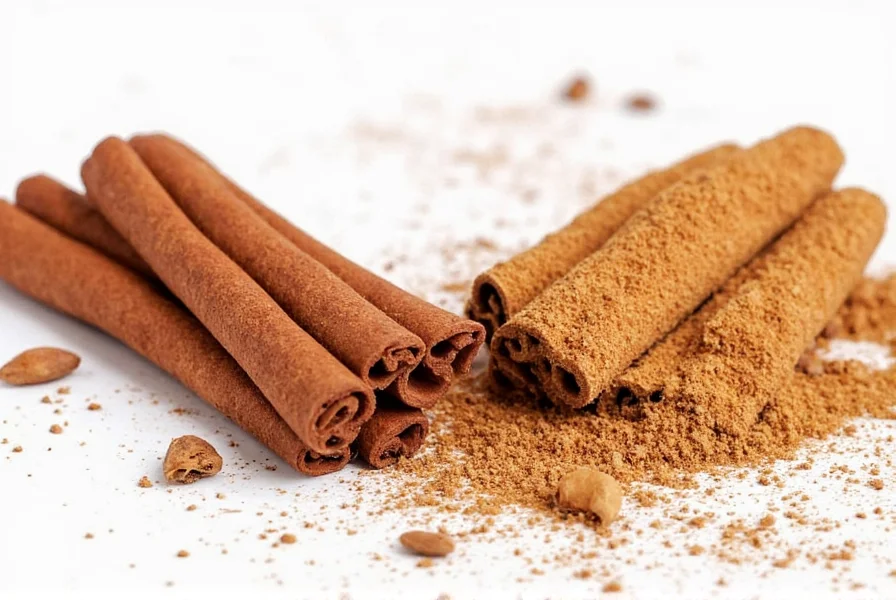Let’s talk about cinnamon—yes, that fragrant spice you probably have tucked away in your pantry. But here's the twist: not all cinnamon is created equal. There are two main players in this game: Cassia cinnamon and Ceylon cinnamon. While they may look similar at first glance, these two spices couldn’t be more different when it comes to flavor, health benefits, and culinary use.

| Feature | Cassia Cinnamon | Ceylon Cinnamon |
|---|---|---|
| Origin | China, Indonesia, Vietnam | Sri Lanka, Madagascar |
| Color | Dark reddish-brown | Pale brown |
| Texture | Thick, hard bark | Thin, papery layers |
| Taste | Bold, strong, spicy | Mild, sweet, delicate |
| Price | Inexpensive | Premium |
| Coumarin Content | High | Very Low |
Health Differences: The Good, the Bad, and the Coumarin
If you're using cinnamon for health reasons, especially regularly, this section is crucial. Let’s dive into what makes these two types of cinnamon stand apart in terms of wellness benefits.
The Role of Coumarin
Cassia cinnamon contains high levels of coumarin, a compound that can be harmful in large amounts. Too much coumarin over time can lead to liver damage and other health issues.
- Cassia: Contains up to 1% coumarin by weight.
- Ceylon: Contains less than 0.004% coumarin — virtually negligible.
Antioxidant Powerhouse
Both types contain antioxidants, but Ceylon tends to have a more balanced profile with fewer potential downsides. If you're taking cinnamon capsules or adding it to smoothies daily, Ceylon is definitely the safer bet.

Flavor Profiles: Sweet, Spicy, or Subtle?
Flavor is where things get really interesting—and personal. Your choice between Cassia and Ceylon should depend on how bold or delicate you want your dishes to taste.
Cassia Cinnamon
Think bold, warm, and punchy. This is the cinnamon you find in most American grocery stores. Its strong flavor works well in hearty baked goods like cinnamon rolls and apple pies.
- Best For: Cakes, cookies, stews, and spiced drinks like chai.
Ceylon Cinnamon
Gentler and sweeter, Ceylon brings a subtle complexity that enhances both sweet and savory dishes without overpowering them.
- Best For: Delicate desserts, rice dishes (like biryani), custards, and even some meat marinades.

Uses in Cooking: When to Use Each Type
Knowing when to use each type can take your cooking to the next level. Here's a handy guide to help you choose:
| Dish Type | Recommended Cinnamon | Why? |
|---|---|---|
| Cinnamon Rolls | Cassia | Its bold flavor stands up to sugar and butter |
| Apple Pie | Cassia | Complements tart apples beautifully |
| Rice Pudding | Ceylon | Provides gentle warmth without overpowering dairy |
| Spiced Tea (Masala Chai) | Cassia | Matches the intensity of cardamom and ginger |
| Moroccan Tagine | Ceylon | Blends smoothly with lamb and dried fruits |

Buying Guide: How to Choose Between Cassia and Ceylon
If you're ready to upgrade your spice rack, here’s how to make an informed purchase.
Check the Label
- Look for "Ceylon cinnamon" on the package.
- Avoid generic labels like "cinnamon" or "Indonesian cinnamon" unless you specifically want Cassia.
Inspect the Sticks
- Ceylon cinnamon sticks are thin and layered, almost like rolled-up paper.
- Cassia sticks are thick, woody, and rough to the touch.
Know the Brands
Some reputable brands that offer quality Ceylon cinnamon include:
- Fresh Origins: Pure, organic Ceylon sticks and powder.
- Simply Organic: Great for baking and everyday use.
- Sri Lanka Spice Co.: Direct source from local farms in Sri Lanka.
Storage Tips
- Store whole sticks in a cool, dark place for up to a year.
- Ground cinnamon loses potency faster—use within 6 months.

Frequently Asked Questions
Can I substitute Cassia for Ceylon in recipes?
You can, but be aware that Cassia is stronger. Use half the amount if substituting in delicate dishes.
Is Ceylon cinnamon worth the higher price?
If you value subtlety in flavor and long-term health, yes! It’s ideal for regular use, especially in drinks and smoothies.
How can I tell them apart visually?
Ceylon is lighter in color, thinner, and has multiple layers. Cassia is darker, harder, and usually just one thick roll.
Does ground cinnamon indicate which type it is?
Unfortunately, no. Always check the label. Ground Ceylon will usually mention "Ceylon" explicitly.
Which is better for lowering blood sugar?
Studies suggest Ceylon is safer for long-term consumption, but always consult with a healthcare provider before using cinnamon medicinally.
How much Cassia cinnamon is safe to consume daily?
The European Food Safety Authority recommends limiting Cassia to no more than 0.1mg of coumarin per kg of body weight daily. For most adults, this equals about 1 teaspoon (2.5g) of Cassia. Ceylon has no such restrictions.
Why is Ceylon called "true cinnamon"?
Historically, Ceylon cinnamon was the first variety traded in Europe and considered the "authentic" cinnamon. While both are genuine cinnamon varieties, Ceylon earned this nickname due to its historical prominence in Western markets.
Conclusion
So, who wins the battle of cassia cinnamon vs Ceylon? It really depends on what you're looking for.
- Want bold flavor and don’t mind the occasional treat? Stick with Cassia.
- Looking for something nuanced, healthier, and versatile in both sweet and savory dishes? Go for Ceylon.
Either way, knowing the difference empowers you to cook smarter, eat healthier, and impress your guests with your kitchen know-how. So next time you reach for that jar of cinnamon, think twice—because now you know there's more to the story!

Pro Tip
Keep both types on hand—one for cozy cinnamon buns, and one for refined dishes and health-focused routines. Variety truly is the spice of life!










 浙公网安备
33010002000092号
浙公网安备
33010002000092号 浙B2-20120091-4
浙B2-20120091-4